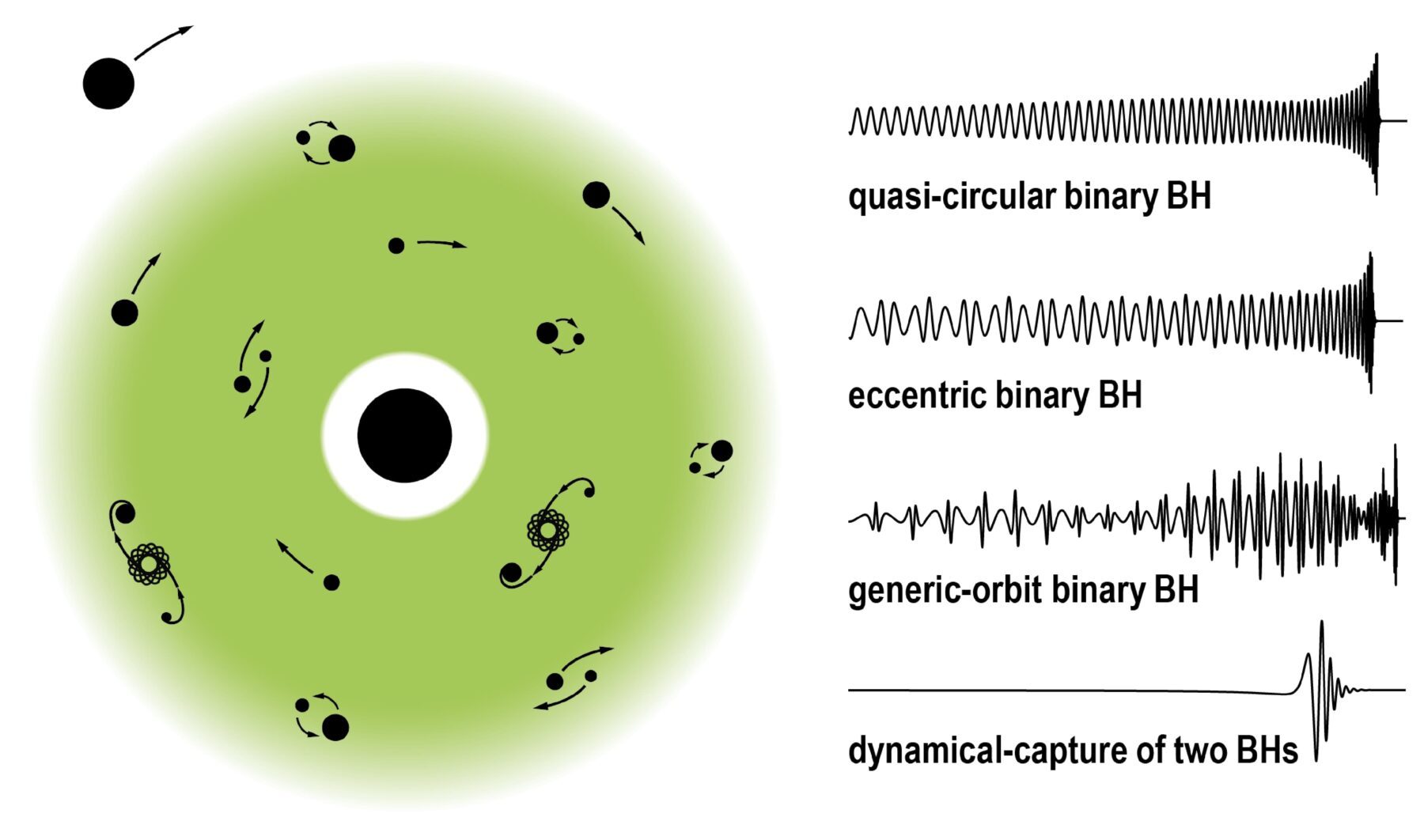
Max Planck Institute for Gravitational Physics – Two Synergy Grants from the European Research Council
Understanding elementary particles and black holes with modern mathematics and the unknown in the gravitational wave sky – two ERC Synergy Grants for international research with scientists from the Max Planck Institute for Gravitational Physics (Albert Einstein Institute) in the Potsdam Science Park.
Understanding Elementary Particles and Black Holes With Modern Mathematics
The European Research Council has granted 10 million euros to fund research into a comprehensive theoretical framework relevant for predicting experimental results.
What do the interactions of elementary particles in accelerators such as the Large Hadron Collider have in common with inspiraling black holes? The study of these two very different processes is based on the same theoretical concept: scattering amplitudes describe the interactions of physical objects and form the basis for predicting measurement results. Experiments at particle accelerators and detections by gravitational-wave detectors have reached a very high level of accuracy with even more sensitive measurements on the horizon. Scientists now want to develop a novel comprehensive theoretical framework to enable the efficient calculation of scattering amplitudes to predict and interpret this data. The European Research Council (ERC) is funding the project with a Synergy Grant of a total of almost ten million euros over the next six years. In addition to the Max Planck Institute for Gravitational Physics in the Potsdam Science Park, Trinity College Dublin, the University of Oxford and the University of Uppsala are also involved in the project.
Read the full report on the website of the Max Planck Institute for Gravitational Physics

Making Sense of the Unexpected in the Gravitational-Wave Sky
The Max Planck Institute for Gravitational Physics is one of the four partners in the international consortium GWSky, which the European Research Council has awarded 12 million euros to develop a deeper understanding of gravitational waves.
Existing and future gravitational-wave detectors will be capable of observing signals with such precision that they may reveal possible deviations from Einstein’s general theory of relativity and the standard model of particle physics. To fully exploit this unique instrumental capability, fundamental advances are required in the theoretical description of black holes and their dynamics, the gravitational waves they emit, their cosmic environment, and the physics beyond the standard model. To provide the necessary theoretical framework, the project GWSky has been awarded 12 million euros over the next six years by the European Research Council. The ERC Synergy grant involves four nodes: the Max Planck Institute for Gravitational Physics (Albert Einstein Institute, AEI) at the Potsdam Science Park, the Niels Bohr Institute in Copenhagen, the SISSA (Scuola Internazionale Superiore di Studi Avanzati) in Trieste, and the University of California, in Los Angeles.
Read the full report on the website of the Max Planck Institute for Gravitational Physics
